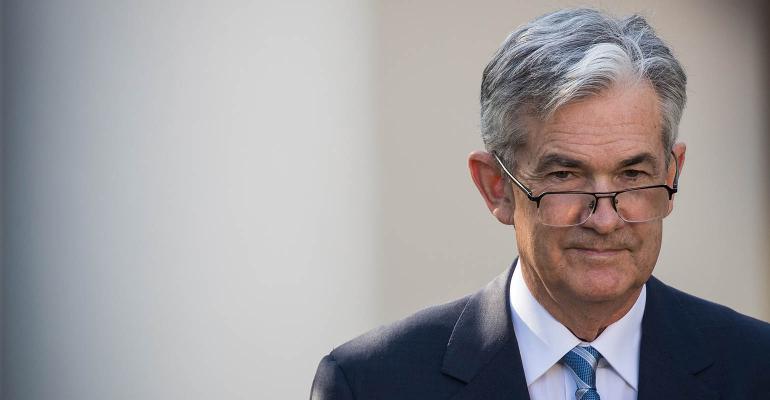(Bloomberg)—Federal Reserve Chairman Jerome Powell has laid out a scenario for a pause in the central bank’s interest-rate hiking campaign sometime next year by highlighting potential headwinds to the U.S. economy.
While generally upbeat about the outlook, Powell on Wednesday listed three possible challenges to growth in 2019: slowing demand abroad, fading fiscal stimulus at home and the lagged economic impact of the Fed’s past rate increases.
“These are things we are well aware of,’’ he said in an appearance at the Dallas Fed.
The central bank is widely expected to raise rates for the fourth time this year in December -- and Powell did nothing to disabuse investors of that notion, playing down the significance of the recent stock market sell-off while playing up the performance of the economy. But his comments about possible drags on growth in 2019 raise questions about how many times the Fed will boost rates next year. The median forecast of policy makers in September was for three increases of a quarter percentage point each in 2019.
That masks a divergence of views, with 12 of the policy makers evenly split among two, three or four hikes. Federal Open Market Committee members will update their rate and economic forecasts at their Dec. 18-19 meeting.
Morgan Stanley Chief U.S. Economist Ellen Zentner said she expects the FOMC to follow a December rate hike with two more increases next year, then hold policy steady. Behind that call: an expected slowdown in growth.
Zentner’s forecast is in line with what investors are expecting, based on trading in the federal funds futures market. That would leave the Fed’s funds rate target at 2.75 to 3 percent, near the level policy makers reckon is neutral for the economy, according to the September median forecast.
“Powell is not really sold on overshooting’’ neutral, said former Fed official Roberto Perli, a partner at Cornerstone Macro LLC in Washington.
Putting policy on hold in 2019 would not be without its risks, however. It would come with unemployment well below the level policy makers reckon is sustainable in the long run without spurring inflation -- 4.5 percent in the September FOMC projections.
Joblessness stood at 3.7 percent in October and New York Fed President John Williams has said he expects it to fall below 3.5 percent next year. Accordingly, Goldman Sachs Group Inc. economists still predict four rate hikes in 2019.
“It’s a pretty bad gamble,’’ Moody’s Analytics Inc.’s Chief Economist Mark Zandi said of the Fed’s willingness to allow unemployment to fall so low and risk an marked upturn in inflation.
He sees a chance the jobless rate could drop to 3 percent by early 2020 -- a level that no policy maker is forecasting.
Powell and his colleagues are counting on well-anchored inflation expectations to help keep price rises in check. If consumers and companies believe inflation will be contained, they will act in ways that will help bring that about.
A number of policy makers have also said they would be willing to countenance inflation rising a bit above their 2 percent target after years at which it almost consistently ran below it.
“If it was a few tenths above on a 12-month chain, that wouldn’t be worrisome,’’ Williams told Bloomberg Television on Oct. 5. The Fed’s preferred inflation measure, the personal consumption expenditures price index, rose 2 percent in September from a year earlier.
Some Fed officials, including Powell’s board colleagues Randal Quarles and Richard Clarida, have also voiced hopes that productivity growth will strengthen. That would allow the economy to expand more rapidly than otherwise on a sustained basis without generating inflationary pressure.
“I do believe our economy can grow and grow faster,’’ Powell said on Wednesday.
--With assistance from Christopher Condon. To contact the reporter on this story: Rich Miller in Washington at [email protected] To contact the editors responsible for this story: Brendan Murray at [email protected] Alister Bull
COPYRIGHT
© 2018 Bloomberg L.P.





